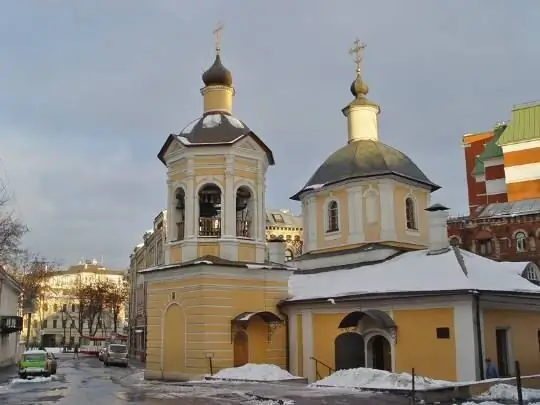
Description of the attraction
The exact time of the construction of the Church of St. Sergius of Radonezh in Krapivniki is unknown. The first mention of this temple dates back to the end of the 16th century. The church also had other qualifying prefixes to its name. One of them pointed to the proximity of the temple to the settlement of the silversmiths who worked at the Mint ("in the old Serebryaniki"). The other - "on Petrovka near Truba" - arose from its proximity to Petrovka Street and Trubnaya Square (and, accordingly, to the pipe into which the Neglinnaya River was launched). There is no such unambiguous explanation regarding the origin of the toponym "Wrens", there are two versions associated with the name of the collegiate assessor Krapivin and nettles that once grew abundantly in these places.
Presumably, the time of the construction of the temple is 1591-1597. In the first half of the 17th century, the temple was still referred to as a wooden one. From the documents of that time it is known that the parish of the temple gradually increased, the church also served as a burial vault for representatives of the princely family of Ukhtomsky, this was evidenced by stone tombstones found in the northern side-altar of the temple. In 1677, the church burned down, but three years later it was referred to as stone.
This temple acquired its present appearance in the middle of the 18th century, when its next reconstruction was carried out, perhaps the most ambitious in its history. The main building has a second tier, the Nikolsky side-chapel and a bell tower. After the plague epidemic in 1771, the number of parishioners decreased so much that the temple was assigned to the Church of the Sign behind the Peter's Gate and even remained abandoned for several years. After the invasion of the French in 1812, the plundered church again became attributed, this time to the temple of Gregory the Theologian on Dmitrovka.
In the 18th century, a relatively empty church in the name of the Metropolitan of Moscow was several times filed with petitions for the organization of monastic farmsteads, but all petitioners were refused. Only in the 80s of the XIX century, the temple was transferred to the establishment of the courtyard of the Patriarch of Constantinople. During the years of Soviet power, the status of a courtyard protected the temple from closing for several years. However, the temple could not completely avoid this fate, and after it was closed in 1938, a workshop that produced sports equipment was located in it.
In the 90s, the temple was revived, again in the status of a patriarchal courtyard. At the beginning of the XXI century, the bell tower was rebuilt, and the church regained the bell ringing.






